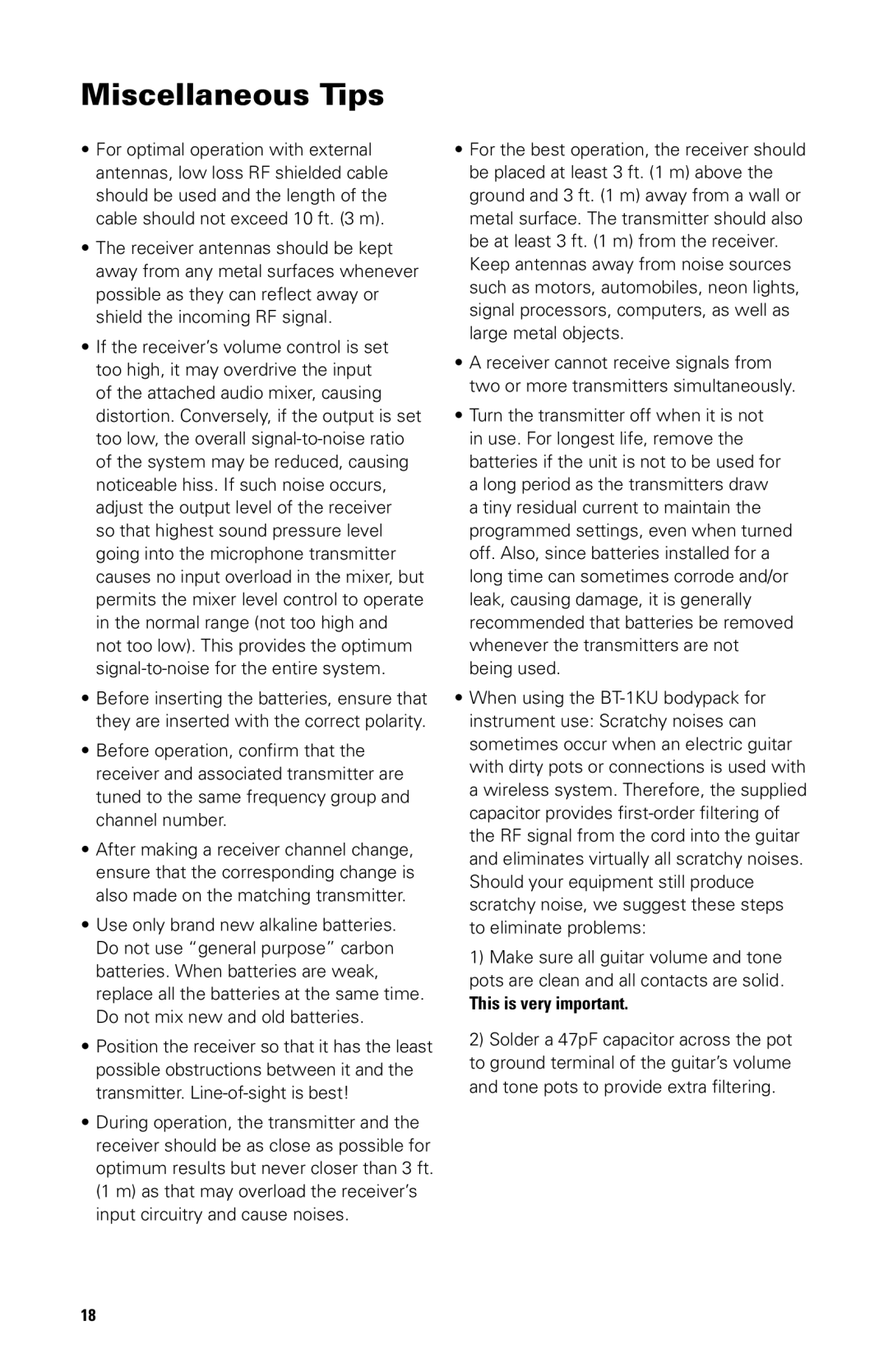Miscellaneous Tips
•For optimal operation with external antennas, low loss RF shielded cable should be used and the length of the cable should not exceed 10 ft. (3 m).
•The receiver antennas should be kept away from any metal surfaces whenever possible as they can reflect away or shield the incoming RF signal.
•If the receiver’s volume control is set too high, it may overdrive the input of the attached audio mixer, causing distortion. Conversely, if the output is set too low, the overall
•Before inserting the batteries, ensure that they are inserted with the correct polarity.
•Before operation, confirm that the receiver and associated transmitter are tuned to the same frequency group and channel number.
•After making a receiver channel change, ensure that the corresponding change is also made on the matching transmitter.
•Use only brand new alkaline batteries. Do not use “general purpose” carbon batteries. When batteries are weak, replace all the batteries at the same time. Do not mix new and old batteries.
•Position the receiver so that it has the least possible obstructions between it and the transmitter.
•During operation, the transmitter and the receiver should be as close as possible for optimum results but never closer than 3 ft. (1 m) as that may overload the receiver’s input circuitry and cause noises.
•For the best operation, the receiver should be placed at least 3 ft. (1 m) above the ground and 3 ft. (1 m) away from a wall or metal surface. The transmitter should also be at least 3 ft. (1 m) from the receiver. Keep antennas away from noise sources such as motors, automobiles, neon lights, signal processors, computers, as well as large metal objects.
•A receiver cannot receive signals from two or more transmitters simultaneously.
•Turn the transmitter off when it is not in use. For longest life, remove the batteries if the unit is not to be used for a long period as the transmitters draw a tiny residual current to maintain the programmed settings, even when turned off. Also, since batteries installed for a long time can sometimes corrode and/or leak, causing damage, it is generally recommended that batteries be removed whenever the transmitters are not being used.
•When using the
1)Make sure all guitar volume and tone pots are clean and all contacts are solid.
This is very important.
2)Solder a 47pF capacitor across the pot to ground terminal of the guitar’s volume and tone pots to provide extra filtering.
18
